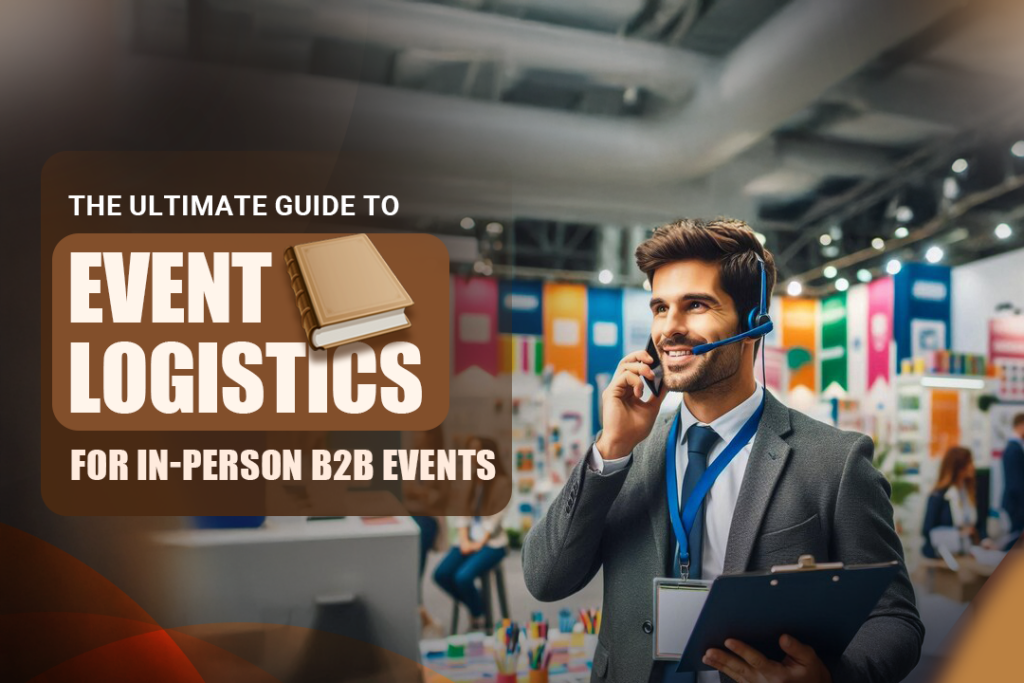
As an event planner, you want to give your attendees the best possible event experience without any hiccups. This means you must deliver perfectly on every front, from catering to flying your keynote speaker; everything has to be perfect. Event logistics is how you can mobilize every resource to make the event happen. It involves putting everything into the right order, at the right time, and in the right place, which helps you materialize your B2B event from the planning stages into reality.
According to an event research website, Grand View Research, the global event logistics market in 2023 was estimated at USD 68.63 billion and is projected to grow at a CAGR of 6.3% from 2024 to 2030. This underlines the importance of event logistics in the overall event industry. As such, in this article, we will explore what event logistics is, what goes into planning your event logistics, and how to enact a full-scale plan around it.
What Is Event Logistics?
Event logistics is the process and effective management of resources, information, and people toward a specific goal. It involves carefully planning and executing an event from start to finish, with every last detail considered and finalized. Event logistics is responsible for finding a suitable venue, getting caterers, sourcing good AV equipment, locating and coordinating with vendors, handling transportation, managing accommodations, onboarding guests, VIPs, keynote speakers, and more.
So to simplify, event logistics is essential to make any event a reality, and if everything goes well, it can make your event a successful venture. As Amresh Verma, Founder of hire4event, states, “A seamless event relies on excellent logistics management. Work closely with an event planning company to coordinate transport, crowd management services, and seating arrangements. An experienced event coordinator will ensure everything is in place so you don’t have to worry about last-minute issues.” This highlights the importance of event logistics and the people involved in that task to ensure everything runs smoothly.
Before we go into how to plan and execute logistics for your event, you need to know about the core stages of event logistics to streamline the overall logistical process.
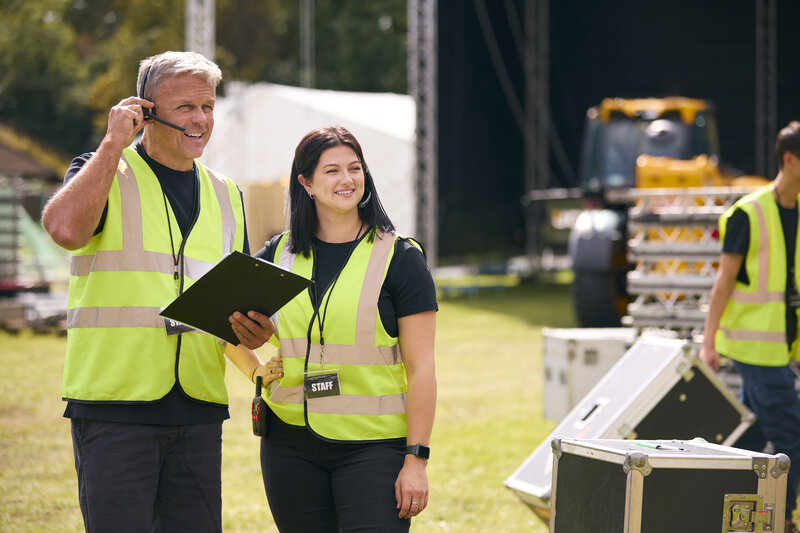
What Are The 5 Cs Of Event Logistics?
The essential process of event logistics is the same for any event type, in-person, virtual, or hybrid. As such the process of planning for logistics is called a lifecycle, and this lifecycle can be broken down into logical steps, making it easier to plan and execute. The 5 Cs cover standard stages of planning event logistics that can assist teams in managing delivery times, maintaining good budget relations, and reviewing progress.
1. Concept
Concept is the stage where you define and conceptualize the main details of the event. This includes creating an outline of the event, specifying event goals and objectives, type of event, event theme, when the event will happen, and where the event will take place.
2. Coordination
This is the trickiest part of the planning phase. Coordination includes the proper allocation of resources, people, and tools to execute the event concept. It involves bringing together all the pieces that are important to build a successful event. This might be approving the event budget, putting together a team, planning an event timeline, deciding on the theme, booking the venue, approaching keynote speakers, arranging marketing, scheduling with potential vendors, writing a contingency plan, and more.
3. Control
Maintaining control is an ongoing process throughout the event logistics phases. This stage involves keeping a tab on the work to ensure everything is going smoothly and according to the plan. It includes checking with the vendors to review the work and make sure that unexpected issues are prevented before they arise. As such, being in control of the entire event logistical process will allow you to deliver a successful event.
4. Culmination
The culmination or ‘climax’ refers to the big day of the event, when everything comes together to produce a successful event. In this stage, you have to constantly monitor all the processes in real-time and ensure any unintended hiccups are ironed out. This involves, communicating with your staff, vendors, security, catering, and speakers to maintain the event agenda.

5. Closeout
This phase happens after the event, and you thank the speakers, guests, vendors, staff, and everyone else for making the event a reality. Ensure the venue is left in a good state, wrap up all the loose ends, and review the contracts for final payments.
The closeout phase can also include checking if the contracts are fulfilled, gathering feedback, reviewing KPIs and goals, debriefing the staff, and rewarding the staff.
Now that we’ve understood the essence of event logistics and the core stages, we will explore how you, as an event planner, can enact a full-scale event logistics plan, starting with all the considerations before the event day/days.
Logistical Components to Consider Before the Event
There are logistical components that must be factored into the planning process before the event. These are the basic elements that need to be planned and executed before the event can happen, like, event goals, venue, arranging vendors, etc.
1. Clarify Your Event Goals and Create an Event Timeline
The first step to having a successful event is to figure out the event’s goals and objectives. As an event planner, you should have a clear understanding of what you want to achieve with this event. This will help you create an event logistics plan that can make the event plan a reality. For instance, if you want to host an event for team-building then that decision will affect the type of venue you need, how much AV equipment you require, and the type of speakers you want to find. Basically, all decisions regarding logistics should flow from these event goals.
Once you’ve specified your event goals, you must create an event timeline to keep your event logistic requirements on track. The timeline should include key dates and tasks related to the event, like early planning meetings, venue research, contracting vendors, rental companies, and catering companies. This timeline must be shared with the team to ensure nothing is overlooked.
2. Consider Logistics for your Event Venue
The next step is finding a suitable event venue since logistics heavily depend on location. Consider the type of event you’re hosting to choose an appropriate venue. For example, if you’re hosting a trade show for innovative products, a suitable venue would be an auditorium with big flat spaces for sponsors to set up their stalls. Similarly, a company team-building event would require an outdoor venue close to the hotel accommodation and transportation.
Simply put, your choice of event type and venue will dictate the type of equipment, staff, and catering services needed. All these considerations can be planned effectively if you have a suitable venue for your event.
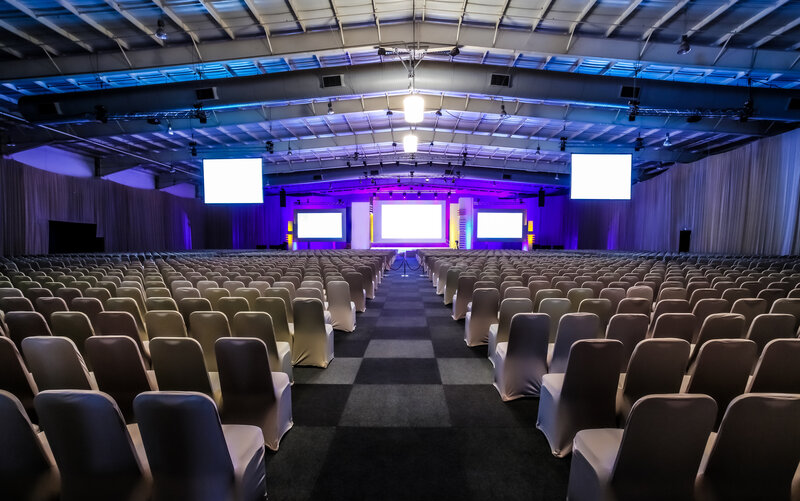
3. Assign Team Members to Critical Logistical Tasks
Event logistics is tricky; without a skilled team, it’s challenging to pull off a successful event. As such, you must assign different logistical tasks to other people based on their skills, expertise, and experience. Similarly, some critical logistical tasks need to be prepared before the event, and these tasks require specially skilled people who will handle things like scouting ideal locations of venue signage, creating a traffic management plan, confirming travel arrangements for guests, VIPs, and speakers, and more.
4. Post Clear Signage for Easy Navigation
Event logistics is not only concerned with the allocation of resources to achieve an optimum outcome but also with providing a smooth event experience for attendees. The simplest way to do this is to spend time strategically putting up signage for easy navigation for everyone. This can prevent overcrowding at entrances and exits of the event venue and make it easier for the staff to manage the overall event.
At any big B2B event, there are a large number of attendees present who can get confused navigating the venue, so to eliminate confusion, you must put signage at critical points to assist them. The trick is to think from the point of view of a newcomer at the venue and to find the spots that feel confusing, where signage would help. Places like entrances and exits are apparent spots to put up signage, but also mark washrooms, emergency exits, meeting spaces, conference rooms, and the ballroom so that no one is confused or misses out on a session just because they couldn’t find the way. Therefore, posting clear signage would actually enhance the event experience for the attendees.
Read our article on “11 Best Techniques for Managing Crowd at Large Events”, to learn how clear signage at event venues can prevent overcrowding and provide a good event experience.
5. Set Clear Expectations with every Vendor
Even though your vendors might know about the venue or have done the research themselves, it’s still a good idea to introduce them and ensure they stick to the plan you’ve created. You have to specify the roles that each person and each vendor team is responsible for, like when to arrive and exit, how to move equipment, break times, mode of conduct, or any other special requirements. This basically means you have to communicate your expectations to your vendors and staff members; otherwise, there’ll be confusion and time delays.
Your role is to ensure that every vendor knows what they’re expected to do and their specific roles and responsibilities. This will help you achieve perfect coordination among all the different vendors.
6. Train Your Staff
You need trained staff and team members to handle critical logistics for your event. In addition to communicating your expectations and specifying roles for vendors and staff, you need to train them in the manner expected of them at the event. However, to do this, you’d need to gather all the staff members in one place and schedule a time for training. This is a big ask, considering everyone, including you, will be hectic days before the event. So, the best solution is to pick a time when the workload is relatively low and when people can take time to have a training session.
Training your staff is basically to teach them the fundamental mode of conduct during the event, how to help the attendees, any special rules or terms and conditions that they should know, and most importantly, training them for emergencies, so they know how to manage the crowds and handle the situation.
Alix Garcia, Founder & CEO of Latino Business Summit, highlights the importance of having a professional staff for your event. She says 2025 will see explosive growth in the event industry, reflecting the demand for skilled event professionals. Alix states that meeting audiences’ expectations for an engaging B2B event requires experienced event planners, seamless event logistics, and trained staff to pull off a successful event.
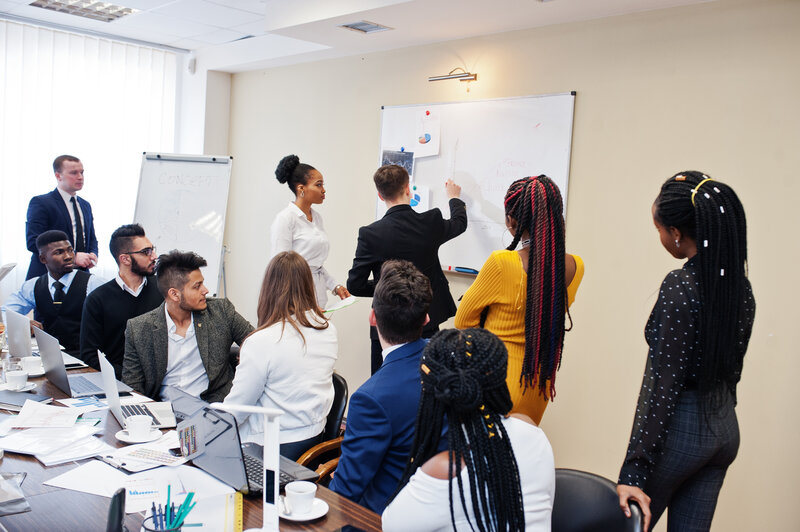
7. Read Reviews of your Vendors
Just like you go through many reviews before buying a product or service, as an event planner, it’s essential to go through reviews for the choice of your vendors. You can check vendors’ reviews on Google Reviews, Yelp, Business.com, TrustPilot, etc. The main thing to look for in the reviews is the number of reviews for a vendor; the more significant, the better. You can also look for reviews on multiple websites to gain their authenticity. Most importantly, focus on reading the reviews rather than on the stars, as they are more elaborate and give better explanations.
8. Arrange an Event Venue Walkthrough
If you’re planning an event at a new venue, then it’s only evident that you and your team members should visit the property first-hand. Before signing the papers for the venue, you should review if the venue meets your expectations.
Review things like parking spaces, the condition of the interior and exterior of the property, check for any plumbing issues, state of the furniture, electric supply, WiFi and cell service, and ADA compliance for people with disabilities. All of these factors must be considered before selecting your event venue, as a lack of them can be a nightmare for your logistics teams. The condition of your venue can either enable a smooth allocation of resources or become an impediment.
9. Set a Proper Communication Plan
Setting a proper communication plan is crucial for a successful event logistics plan. Establish a chain of command among team members and clarify roles for each personnel and who they’re accountable for. Set levels of troubleshooting steps where you assign a person based on the magnitude of a problem and clarify the types of issues that would be handled on the spot.
You need multiple communication channels and use various tools like phones, walkie-talkies, and even hand signals to have a proper communication plan. Have a backup mode of communication if the primary gets compromised.
Things To Do at the Day of the Event
Now that you’ve all the logistics in order and planned out everything, it’s time for action. Your task, as an event planner now, is to execute that plan and proactively coordinate all the resources and people to run the event. So, let’s look at the logistical strategies you can use on the day of the event to make it successful.
1. Arrange a Clear Route for Vendors
On the event day, you want to ensure that all your vendors arrive at the venue on time to prepare and set up before the event. To make that happen, you must arrange a separate entry and exit route exclusively for vendors. This will prevent commotion at the main entrance and allow vendors to move their equipment freely. Additionally, ensure that a person on your team acts as a point person between different vendors and the stage management team.
2. Schedule a Trial Run
Even after you’ve prepared for everything and have all the contingencies in place, you might still want to schedule a trial run before the big day to understand how the event will take place and find some irregularities that might need changing. Depending on the venue size, you can run a full-scale trial run of the event or just run a drill of some essential parts.
You can ask the vendors to participate in the drill to understand what can happen. Moreover, you can also do emergency drills to enact scenarios that prepare you for emergencies. Most importantly, you must take this opportunity to do a final check of all the equipment, like cameras, microphones, and speakers. Also, check all the video slides and presentations to avoid any last-minute mishaps. Check the WiFi and cell service to ensure that live streaming, if any, can happen without disruption. A trial run would help you evaluate your event and find quick solutions at the very last minute before the event.
3. Assign a Team Member for Troubleshooting
You want everything perfect on the day of the event, and that requires you to proactively hound for any mishaps or irregularities in the event. However, you cannot monitor everything as an event planner, so you must assign trustworthy and reliable team members to troubleshoot. This duty can be monitoring all the logistical arrangements to check if they’re moving according to the plan, proactively taking action if anything goes wrong, and ensuring vendor compliance for a successful event.
4. Ensure clear Recognition of the Logistics Team
To ensure that there’s no confusion, you need to make everyone working for the event recognizable to the attendees and each other. This can be done by wearing event-branded t-shirts, distinct and bright-colored lanyards with badges, and carrying walkie-talkies. You can follow dark suits with an understated name tag at more formal events to make it more appropriate.
Either way, the goal is to ensure that the event team is recognizable to each other with name tags and to everyone with unique uniforms. This way, attendees needing assistance can easily approach you by identifying the uniform. Moreover, security personnel should also wear a uniform that stands out from the crowd.

Logistics After the Event
The big day is over, but your job is not. Event logistics is not only a matter of moving objects and people to build a successful event but also wrapping up everything neatly, tying up loose ends, and creating productive networks with vendors for your next event. Essentially, logistics after the event means that you extend the same treatment to the vendors that you previously extended to them before the event. You cannot pretend to be warm and welcoming when onboarding vendors but ignore them when they need your assistance wrapping things up. Therefore, you have to follow the event logistics strategies to assist your vendor teams to finish things off and build good relationships.
1. Set a Clear Exit Route for Vendors
Similar to how you created an exclusive entryway for your vendors to arrive at the venue, you need to arrange an exit route for them to move their equipment out of the venue. This might sound simple, but there are many things to consider. You need to ensure that the venue is precise and all the attendees have left the premises; then you can permit your vendors to wrap up their equipment or things, like banners, signboards, stalls, special lighting equipment, speaker systems, electronic equipment, carpets, catering instruments, and more.
All of these cannot be done if the attendees haven’t left the venue, so you can only schedule a time to unpack after the event. The next thing you need to do is to create a schedule for different vendor teams to exit the premises. To avoid commotion and confusion, you must allot specific times for each vendor team to wrap up their things and exit the venue. This will give them enough time to collect all their equipment and leave the venue without hassle.
2. Remain On-site Until Things Wrap Up
Your job as an event planner is not only to plan your event logistics and bring together different teams and vendors to work together but also to ensure that you are present on-site to monitor the exit process. Your presence will send a message to the vendors that you care about the event and the people who helped make it happen.
By being on-site you can help different vendor teams to wrap things up and even bring your own team members to advance help if needed. This will create a good impression and enable you to build a good rapport with them, which will definitely help you in future events.
3. Conduct a Post-Event Survey for Vendors
The last step in your event logistics planning is to get feedback from your vendors and all the stakeholders. Write a post-event survey questionnaire that can give you relevant insights into how you can improve your logistical planning and execution.
Post-event survey questions give you a comprehensive outlook of the event from an outsider’s perspective that can help you find flaws that you would usually overlook. It can also help you create an environment where future vendor partners will happily collaborate and work with you. Overall, sending out post-event surveys online or offline can give away an impression that you care about improving and their feedback.
To know more about the post-event survey questionnaire, read our blog on “53 Event Survey Questions For Maximum Responses”.
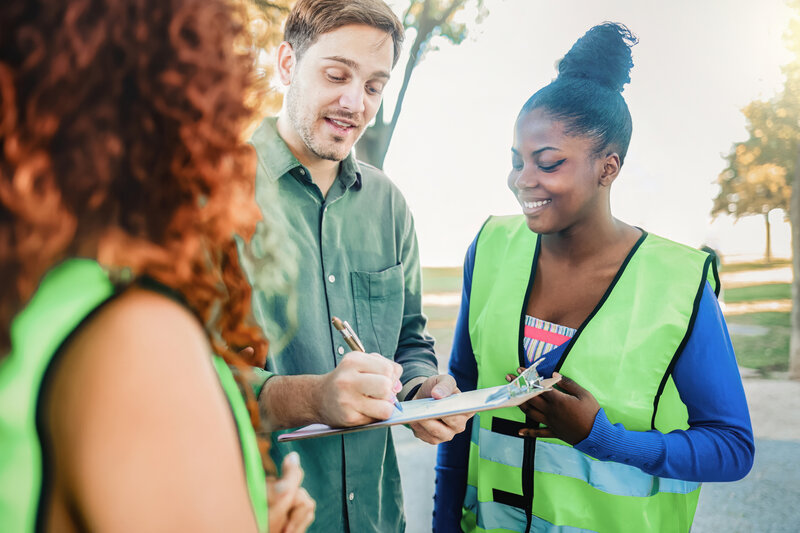
What are the Key Components of Event Logistics?
As we have seen in this article, event logistics require you to figure out many things before contacting vendors. Multiple factors have an impact on the event logistics plan. So, let’s look at the key elements for event planning logistics 2025.
- Venue – Choosing the right venue will help you decide many logistical arrangements for your event. You need a venue appropriate for the event, considering the location, access to public transportation, downtown area, etc. Most of all, you need to factor in the cost of the venue, the capacity to hold all the guests, the availability of in-house services, and whether they can build you a website.
- Catering – Catering is another key component that affects event logistics. Catering isn’t just serving people food and deciding on the dining theme and experience. You need to highlight the event’s spirit through food and dining sessions that reflect the core objectives of the event. All of these play into the logistical considerations of catering for the event.
- Technology – As per the Grand View Research report, the integration of AI, blockchain, and the Internet of Things (IoT), is enhancing event logistical capabilities by streamlining inventory management, asset tracking, and real-time monitoring. Therefore, technology can be a significant logistical factor if your event is online. It will take a considerable chunk of the logistical arrangements like video conferencing equipment, logistics software development services, event management platforms, marketing tools, and communication platforms. But even if you’re planning an in-person or hybrid event, technology will still decide your event logistics because you’ll have to arrange A/V equipment, presentations, or an event app. Check out our article on event technology to know more, “Top 27 Event Management Software for On-Site Event Efficiency”.
- Communication & Organization – To run an event successfully, you need your people to have an efficient communication platform to communicate, collaborate, and work freely. You can book an event communication platform and rent walkie-talkies, Bluetooth headsets, and pagers for the event, all of which will be factored into your event logistics plan.
- Staff – Staffing is a significant logistical consideration. The availability of skilled people can make or break your event. Pulling off a successful event requires many people to work together and leverage their own and each other’s skills to achieve an objective. Moreover, it’s not just the technical expertise needed but also soft skills like time management, hard work, honesty, and communication skills. Therefore, hiring a skilled staff for your event is a significant logistical consideration.
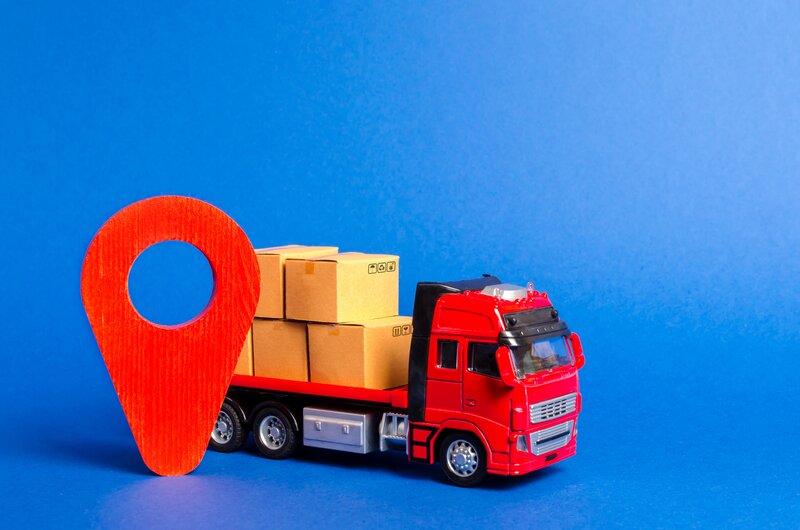
Key Takeaway
Event logistics is at the heart of event planning and execution. It is a process by which you can manifest your event plans into a reality. As we have seen in this article, numerous considerations and factors decide how event logistics should be planned, and each event has its own set of factors that require unique logistics. Event logistics cannot be ignored, and any event planner must carefully plan and strategize to create a successful event.
If you want to know more about event planning and its nuances, visit Eventible to learn more about how you, as an event planner, can create the successful B2B event of your dreams.




Comments are closed.